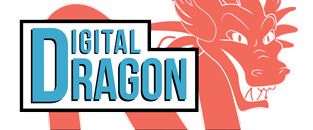Is A.I. really taking over the world? Is Chat GPT writing this blog post about Chat GPT?
What is the message about A.I. and should we embrace it!?
Based on all the buzz and going-on-abouts, it’s time we revisit artificial intelligence. Dominating all the headlines are things like DALL-E, Midjourney, and especially Chat GPT. These platforms can accomplish some pretty extraordinary things, from creating high resolution, highly accurate images, to writing college level papers. Before you ask, no, I did not use Chat GPT to write this or any of the previous blogs. But I do know projects that do use A.I. And it’s pretty cool.
First, let’s dissolve any misconceptions. We’re still very much in the realm of narrow A.I. These softwares are good at specific tasks, like generating images based on data sets found online. They are less tidy at accomplishing broader tasks and are far far away from the level of something like Iron Man’s “Jarvis” or Halo’s “Cortana.”
While there is awe and mystery around these now widely available technologies, how are leveraging them in our current practices? Because our department focuses on rapid prototyping and iterative design, some of our teams have adapted use of A.I. for mood-boarding and concept art. Initially artists will input images that capture some aspect of what they’re going for and will riff on those. From there, the artists tweak, polish, and refeed the updated art back into the platform for the next iteration. After the final direction is decided, the artists will refine the artwork for all the various requirements. In this case, A.I. has allowed them to more rapidly iterate and provide an immense swath of options before honing in and committing cycles to create game ready assets.
This semester, we’ve gone even further and a project is relying on Chat GPT3 to drive the narrative of a murder mystery game they’re creating. So how does that work? Compared to most games with limited branching narrative arcs, the team has trained “characters” to provide interaction based on completely open-ended conversations. However, because people are people, players tend to immediately try and “break” the game by asking the agents wild things to destroy any sense of immersion into the game. The team has to modify what the agents know, seeming they are trained on the world wide web. This could liken framing a knowledge base to only terms found around the timeline of the setting of the game. When asked about “cell phones” for example, the agent will question and eventually “get angry” and deflect back to what they’ve been trained on. In this instance, the content creators are still in control of the story, but are leveraging A.I. for more perceived freedom in play. You can follow the team’s progress here: https://projects.etc.cmu.edu/chatbot-ai/posts/.
TLRD; Despite its many recent advances, A.I. is in its early stages and far from the ability to excel at broader tasks. We can still leverage these platforms to streamline our processes as outlined from the projects currently running at our department. It’s important to note that we aren’t shying away or condemning their usage, but rather leaning in to learn how they can allow us as humans to better realize our vision when creating. Whether you’re all Aye-I, or strictly Nay-I, A.I. is here to stay-I.
About the Author:
John Balash was instrumental in Digital Dragon’s launch in 2013 as its first Curriculum Director and is now back in the fold as a consultant on all the latest and greatest in tech education.This is John’s latest contribution to a monthly blog series we’ve launched, Tech News from the Frontier. John is the Director of Educational Engagement at Carnegie Mellon University’s Entertainment Technology Center. John has worked on educationally-focused initiatives with clients ranging from D.A.R.P.A. to Disney. Working from both sides of the desk, you can find John in classrooms and conferences around the world exploring new uses for technologies in learning environments.



